'Design Your Own Pride Flag'

By designing their own Pride Flag, children and young people can not only have fun and experiment with various art techniques, but also learn about the history and significance of the Pride movement. Children are invited to create a flag filled with things that matter or are important to them personally.
This activity can help increase awareness and promote acceptance of diverse identities, while also encouraging individuality and self-confidence.
So, let’s unleash our creative spirits and celebrate Pride together! We can’t wait to see the amazing designs that our young artists will come up with.
How could this resource be used?
- To support children to celebrate what matters to them personally.
- To learn about the history behind Pride Month and the Pride Flag.
Relevant Curriculum Links:
England PSHE – Which statutory PSHE curriculum* objectives does this resource fall into? *in line with the PSHE Association 2021 Statutory Guidance.
KS1:
- H18. different things they can do to manage big feelings, to help calm themselves down and/or change their mood when they don’t feel good.
- R21. about what is kind and unkind behaviour, and how this can affect others.
- R22. about how to treat themselves and others with respect; how to be polite and courteous.
- R23. to recognise the ways in which they are the same and different to others.
- R25. how to talk about and share their opinions on things that matter to them.
- L4. about the different groups they belong to.
- L6. to recognise the ways they are the same as, and different to, other people.
KS2:
- H16. about strategies and behaviours that support mental health — including how good quality sleep, physical exercise/time outdoors, being involved in community groups, doing things for others, clubs, and activities, hobbies and spending time with family and friends can support mental health and wellbeing.
- R31. to recognise the importance of self-respect and how this can affect their thoughts and feelings about themselves; that everyone, including them, should expect to be treated politely and with respect by others (including when online and/or anonymous) in school and in wider society; strategies to improve or support courteous, respectful relationships.
- R32. about respecting the differences and similarities between people and recognising what they have in com.
- L6. about the different groups that make up their community; what living in a community means.
- L7. to value the different contributions that people and groups make to the community.
- L8. about diversity: what it means; the benefits of living in a diverse community; about valuing diversity within communities.
Scottish Health and Wellbeing Curriculum Outcome(s):
- Mental and Emotional Wellbeing:
- I understand that there are people I can talk to and that there are a number of ways in which I can gain access to practical and emotional support to help me and others in a range of circumstances. HWB 0-03a / HWB 1-03a / HWB 2-03a / HWB 3-03a / HWB 4-03a.
- I understand the importance of mental wellbeing and that this can be fostered and strengthened through personal coping skills and positive relationships. I know that it is not always possible to enjoy good mental health and that if this happens there is support available. HWB 0-06a / HWB 1-06a / HWB 2-06a / HWB 3-06a / HWB 4-06a.
- Relationships, Sexual Health and Parenthood:
- I recognise that we have similarities and differences but are all unique. HWB 0-47a / HWB 1-47a.
More amazing resources you might like:
- All
- Bullying and Anti-Bullying
- Emotional Literacy
- Emotional Regulation
- Grounding Techniques
- Happy Scribble
- Mindfulness
- Morning Slides
- PSHE Curriculum
- Relationships
- Self-Regulation
- The Scribbles Crew
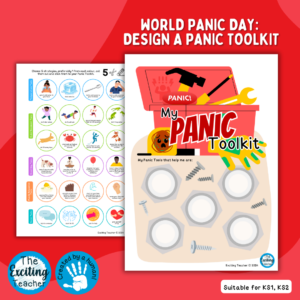
World Panic Day: My Panic Toolkit ‘Cut and Stick Activity’ Calming Strategies (inspired by T.I.P.P Skills in DBT)
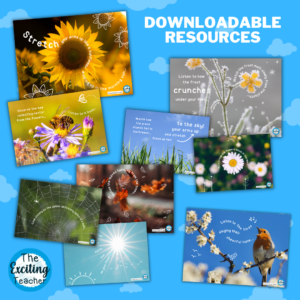
Mindfulness & Grounding Strategies Posters for Outdoor Reflection / Calm Area
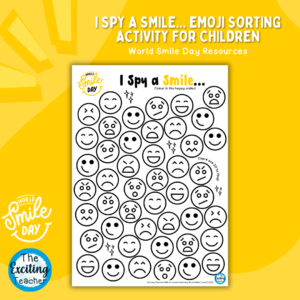
World Smile Day: ‘I Spy A Smile’ Colouring Activity
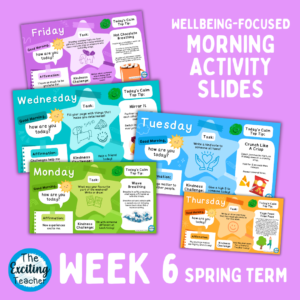
Morning Activity Slides – Week 6 (Spring Term): Emotional Literacy, Wellbeing and Mindfulness Focused

Anti-Bullying: Kindness in the Playground Thought Bubbles

Anti-Bullying: How Words and Actions Affect Others – The Crinkled Heart FREE Activity
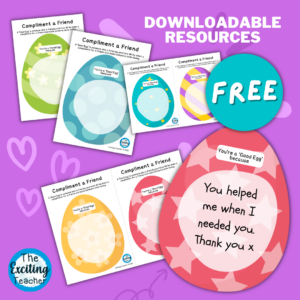
FREE: Compliment a Friend who is a ‘Good Egg’

Feelings Check-In Board – Complete Collection Edition (featuring The Scribbles Crew)
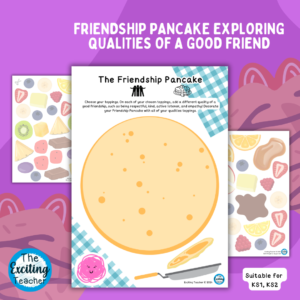
Exploring Qualities of a Good Friend: Friendship Pancake (Pancake Day themed)

The Problem-Solving Worry Tree
Share this resource:
Request a Resource
Want to request or suggest a resource? Pop us a message below and we will see what we can do. We are not able to respond directly to all requests but be rest assured, we are reading them and constantly updating the resource bank accordingly to all your fabulous ideas!
